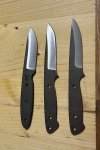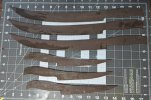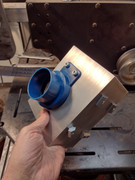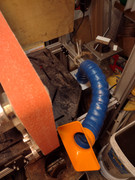Just to clarify about a glass platen:
A "glass" platen for a grinder is pyroceramic glass. It can withstand around 1500°F without breaking. It is very hard (Rockwell 60) and strong when glued to a solid backing plate. It is designed for high heat situations like fireplace doors. The main reason for using it on a grinder is it is very flat, cheap, and readily available. I hear people say they wear it down fast. I have only ever replaced a pyroceramic platen when I broke it by setting the arm down on the floor too hard. I never saw any wear on the surface otherwise.
Tempered glass is designed for windows and entry doors to resist impact. When the impact is greater than its yield strength (about 3 times the IMPACT resistance over pyroceramic) it is designed to shatter into thousands of 1/4"/6mm pieces with no sharp points. It isn't harder, just tougher than pyroceramic glass.
Since a glass lined platen should not be receiving impact, that is a moot point. What a platen does receive is considerable heat. Tempered glass would be very inadequate for many of us who do hogging of blades.













